KEY
TAKEAWAYS
- Asian inventory markets displaying robust relative developments.
- In the meantime, India, Mexico, and Brazil are nosediving.
- Total, the US is stull beating Europe.
The worldwide inventory market is an enormous place, and it extends far past the borders of america. Whereas the US market is undeniably the most important and sometimes units the tempo for others, it is revealing to step again and contemplate the worldwide scene often. This broader perspective can alert traders to important shifts in inventory market rotations worldwide, significantly when the US market has marched off by itself.
Present Worldwide Rotations
The Relative Rotation Graph (RRG) for worldwide markets above plots a number of worldwide inventory market indices and benchmarks them in opposition to the Dow Jones International Index ($DJW).
The S&P 500 ($SPX) is positioned very near the middle of the chart, hugging the benchmark. This proximity is anticipated, on condition that the US constitutes a hefty portion of the Dow Jones International Index. Nonetheless, the S&P 500 can also be depicted with a brief tail throughout the weakening quadrant, indicating a renewed up-move throughout the already rising relative pattern.
Asian Markets Are Robust
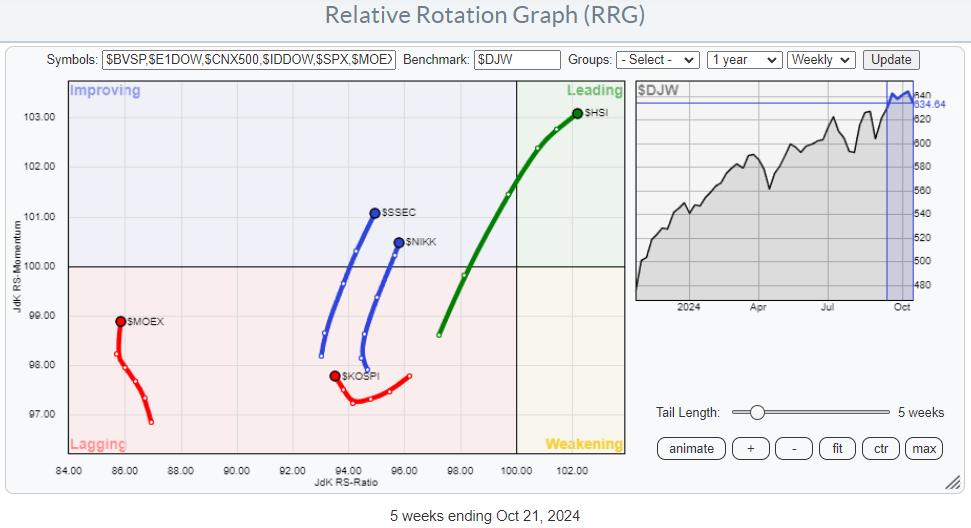
Shifting our focus from the US, we observe a number of well-defined and sturdy relative developments in different markets. The Grasp Seng Index ($HSI) in Hong Kong stands out, with its tail transferring from the lagging quadrant by way of bettering and into the main quadrant over the past 5 weeks. That is the longest tail on the RRG, suggesting a robust transfer with a optimistic RRG heading and the best RS momentum and ratio readings.
Different markets displaying optimistic developments embody China ($SSEC) and Japan ($NIKK), each of which have transitioned from the lagging to the bettering quadrant. This shift signifies a relative energy and momentum pickup, hinting at possible outperformance within the coming weeks.
Conversely, the Russian ($MOEX) and Korean ($KOSPI) inventory market indices are choosing up relative momentum however stay throughout the lagging quadrant, persevering with to underperform.
The place is the Cash Flowing?
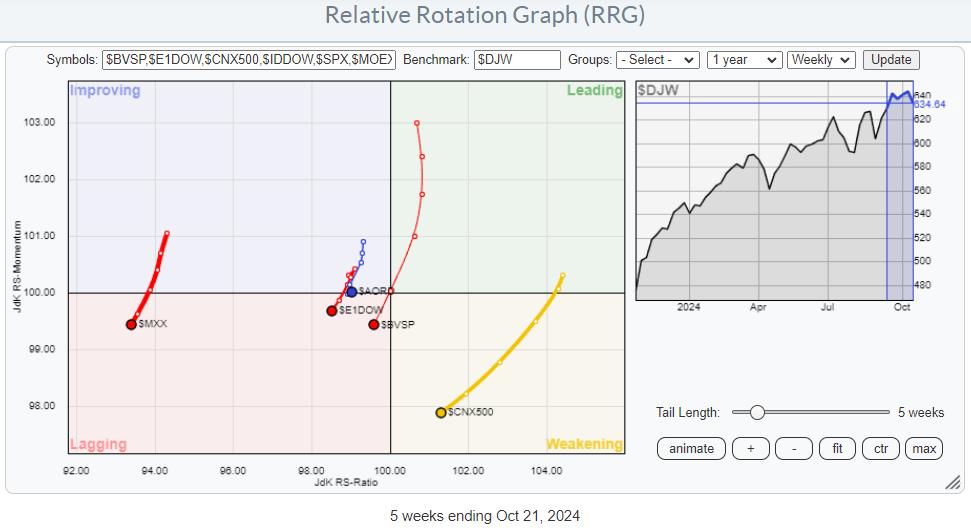
If we assume that world inventory market cash migrates to essentially the most promising places, we’ll discover outflows from sure markets. As an illustration, India’s CNX 500 has seen its tail transfer from the main quadrant by way of weakening. It’s quickly approaching the lagging quadrant, signaling a shift to underperformance, significantly in opposition to the Asian markets and the S&P 500.
A number of markets, together with the Australian All Ordinaries Index ($AORD), the DJ Europe index ($E1DOW), the Brazilian Bovespa index ($BVSP), and the Mexican Bolsa Index ($MXX) exhibit unfavourable headings nearer to the benchmark. The Brazilian market, particularly, exhibits an extended tail crossing into the lagging quadrant. On the identical time, the Mexican Bolsa accomplished a rotation of lagging-improving-lagging at very low RS-ratio ranges. This makes it one of many weaker and extra harmful markets from a relative perspective.
Grasp Seng Index vs. Indian CNX 500
The Grasp Seng Index and the Indian CNX 500 current contrasting developments.
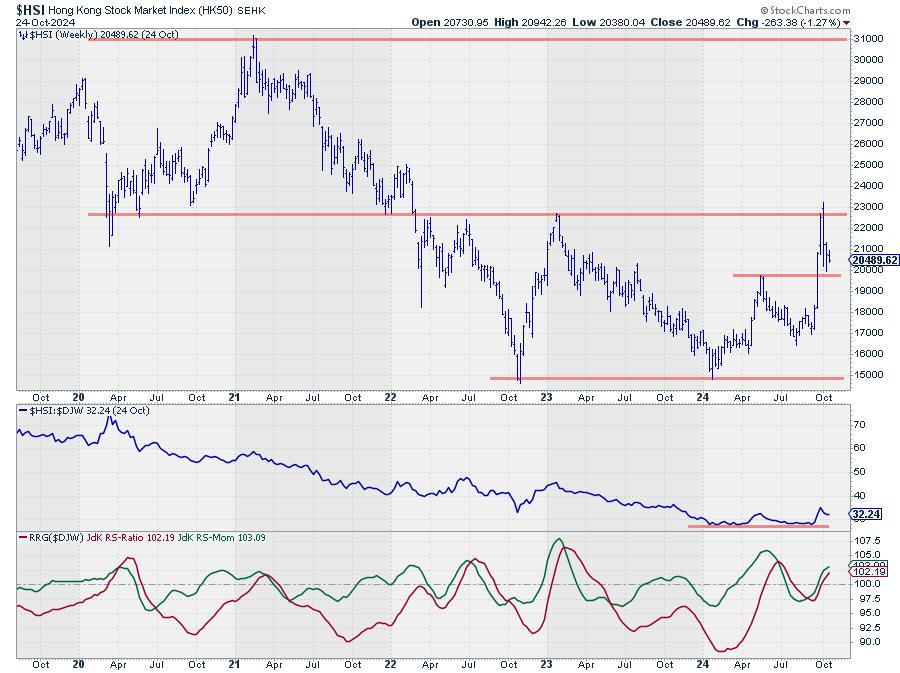
After a chronic decline, the $HSI has fashioned a broad buying and selling vary and is at the moment testing a big resistance stage. A break above this resistance might sign substantial upside potential, with relative energy indicators suggesting a bottoming out and a possible shift in pattern.
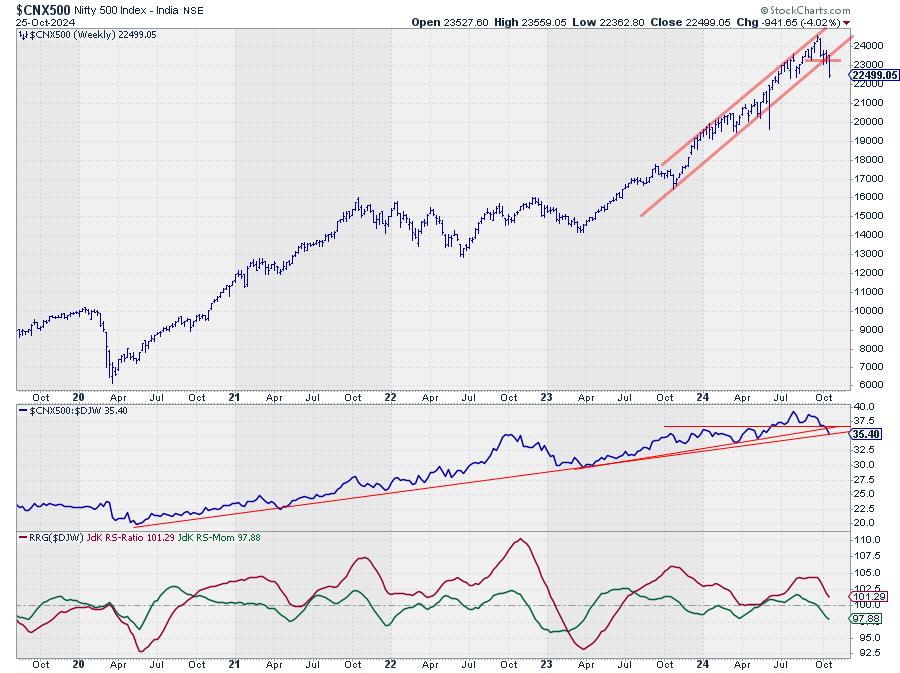
In distinction, the Nifty 500 index in India has accomplished a toppish formation, with relative energy trending downward. This factors to additional underperformance and a unfavourable worth trajectory for the Indian market.
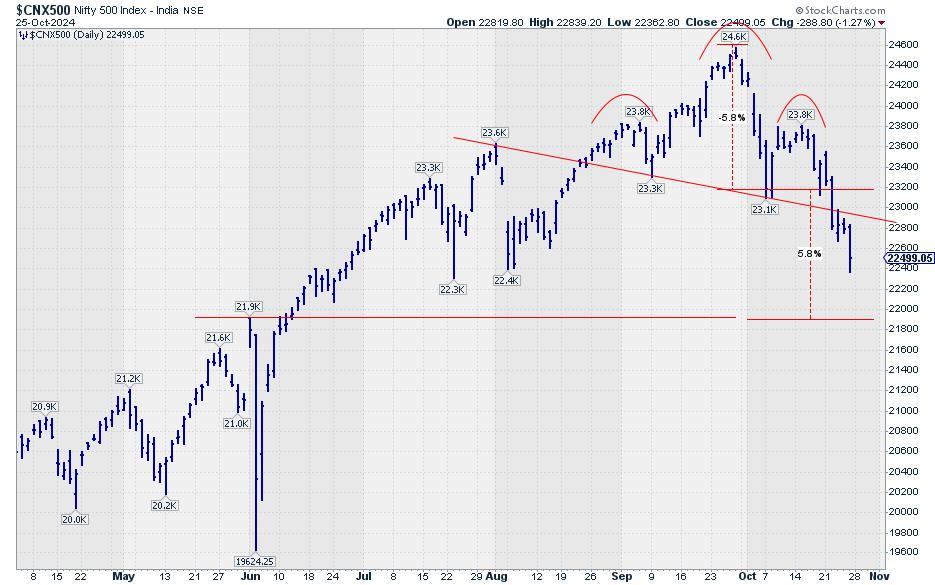
Zooming in on the every day chart of the Nifty 500 exhibits that an H&S prime formation has simply accomplished, signalling weak spot not solely from a relative perspective but in addition by way of worth.
S&P 500 vs. European Markets
The S&P 500 and European markets are additionally transferring in reverse instructions.
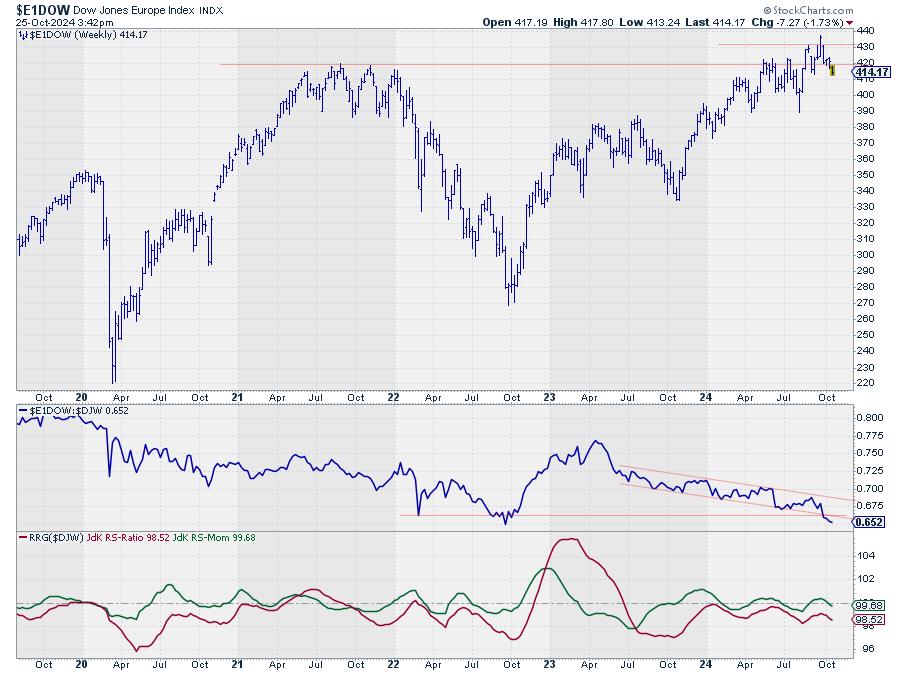
The Dow Jones Europe index has encountered resistance and exhibits a breakdown in relative energy versus the worldwide benchmark, confirming a relative downtrend.
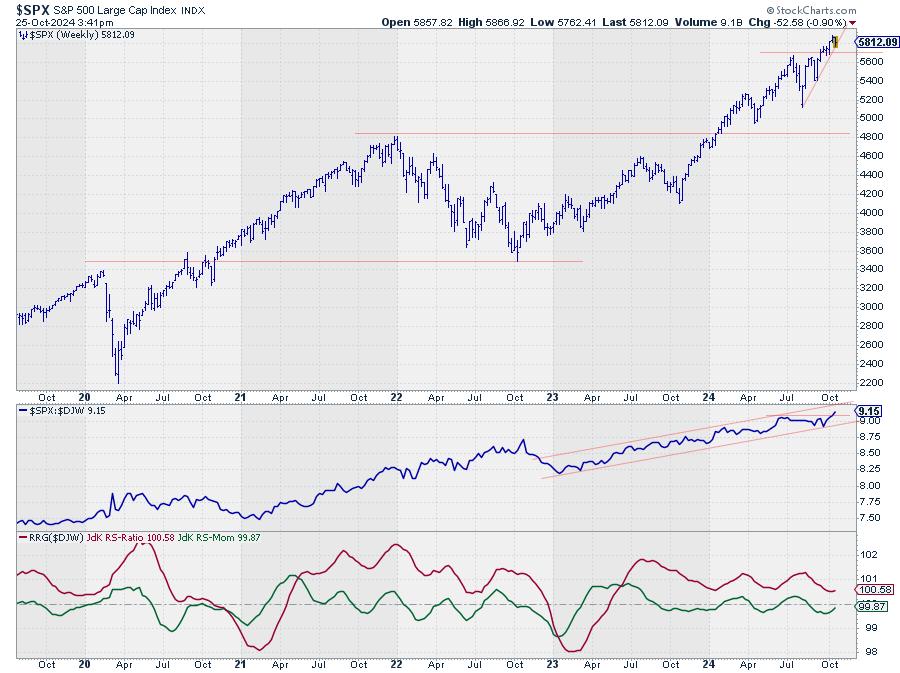
In the meantime, the S&P 500 has damaged to new highs in relative energy, affirming its relative uptrend.
Key Takeaways
From a global perspective, the Grasp Seng index and the S&P 500 exhibit optimistic rotations, whereas the Nifty 500 and European markets are on a unfavourable trajectory. It is necessary to notice that the energy of the S&P 500 doesn’t assure its continued rise; it merely signifies that, at current, it’s outperforming many different markets.
By analyzing relative strengths and rotations utilizing Relative Rotation Graphs, traders can acquire insights into the place the markets could also be heading vis-a-vis one another and make extra knowledgeable choices.
#StayAlert and have an awesome weekend, –Julius
Julius de Kempenaer
Senior Technical Analyst, StockCharts.com
Creator, Relative Rotation Graphs
Founder, RRG Analysis
Host of: Sector Highlight
Please discover my handles for social media channels beneath the Bio under.
Suggestions, feedback or questions are welcome at Juliusdk@stockcharts.com. I can’t promise to answer each message, however I’ll actually learn them and, the place fairly attainable, use the suggestions and feedback or reply questions.
To debate RRG with me on S.C.A.N., tag me utilizing the deal with Julius_RRG.
RRG, Relative Rotation Graphs, JdK RS-Ratio, and JdK RS-Momentum are registered logos of RRG Analysis.

Julius de Kempenaer is the creator of Relative Rotation Graphs™. This distinctive methodology to visualise relative energy inside a universe of securities was first launched on Bloomberg skilled providers terminals in January of 2011 and was launched on StockCharts.com in July of 2014.
After graduating from the Dutch Royal Navy Academy, Julius served within the Dutch Air Power in a number of officer ranks. He retired from the navy as a captain in 1990 to enter the monetary trade as a portfolio supervisor for Fairness & Legislation (now a part of AXA Funding Managers).
Be taught Extra





